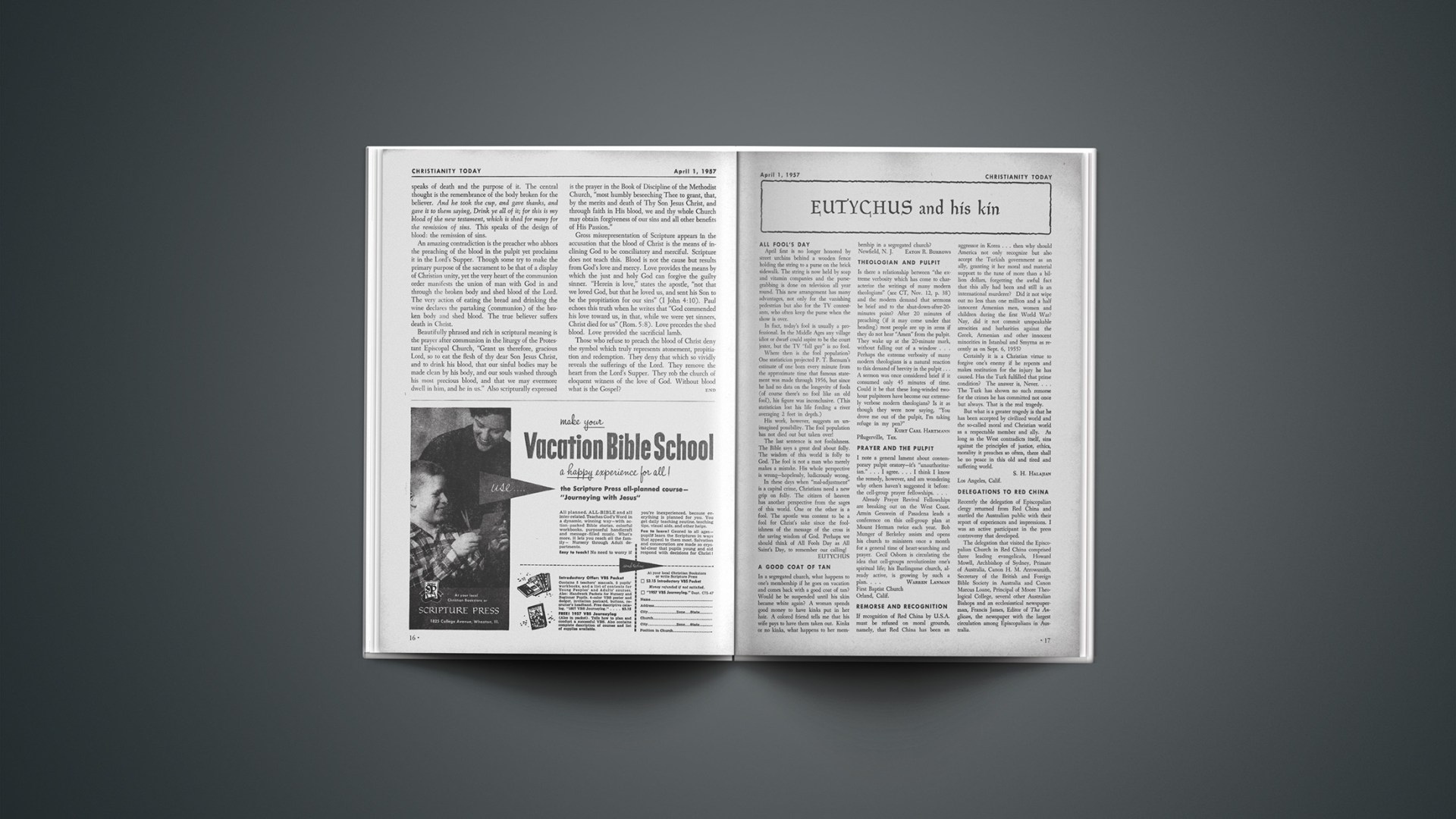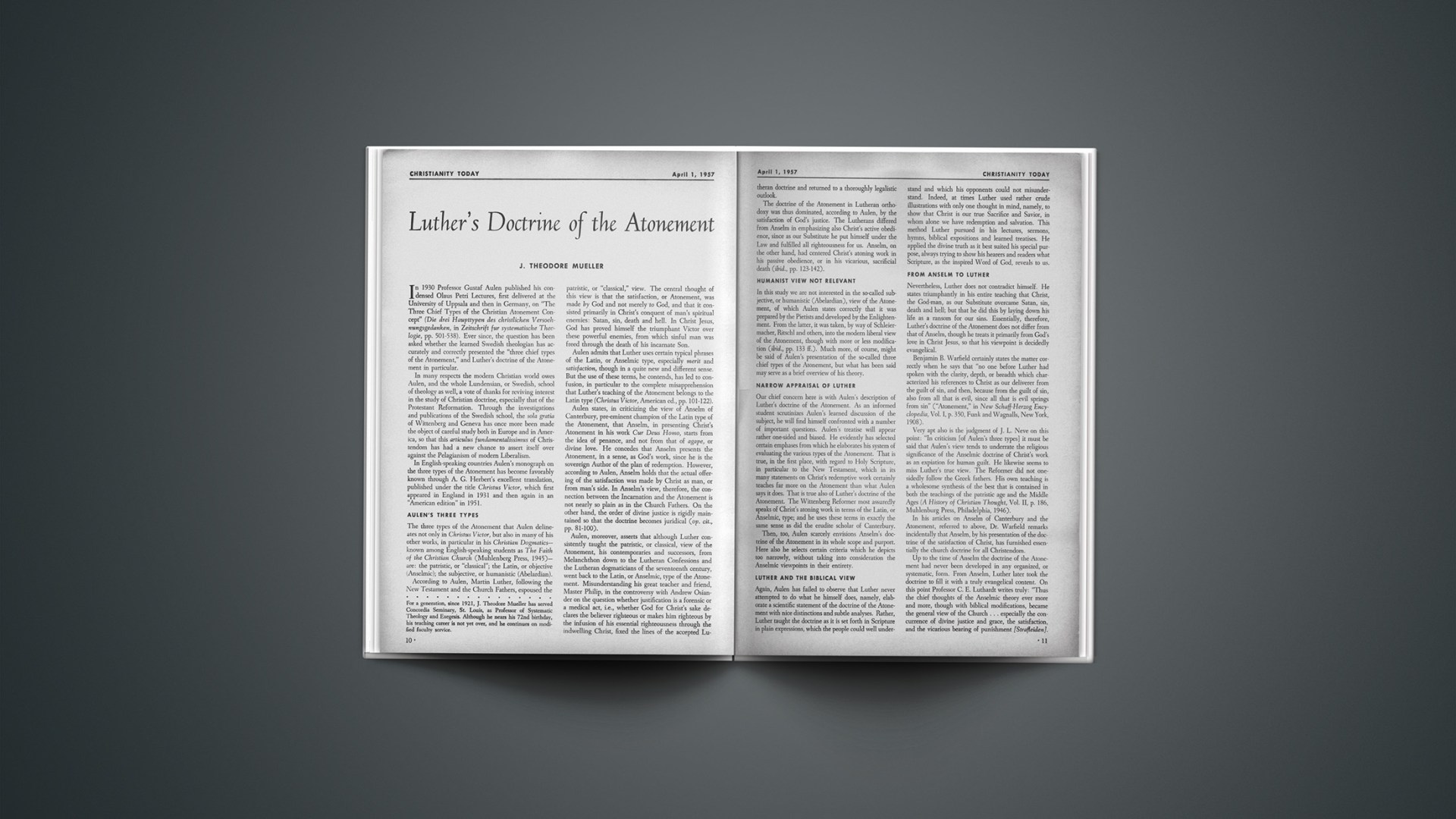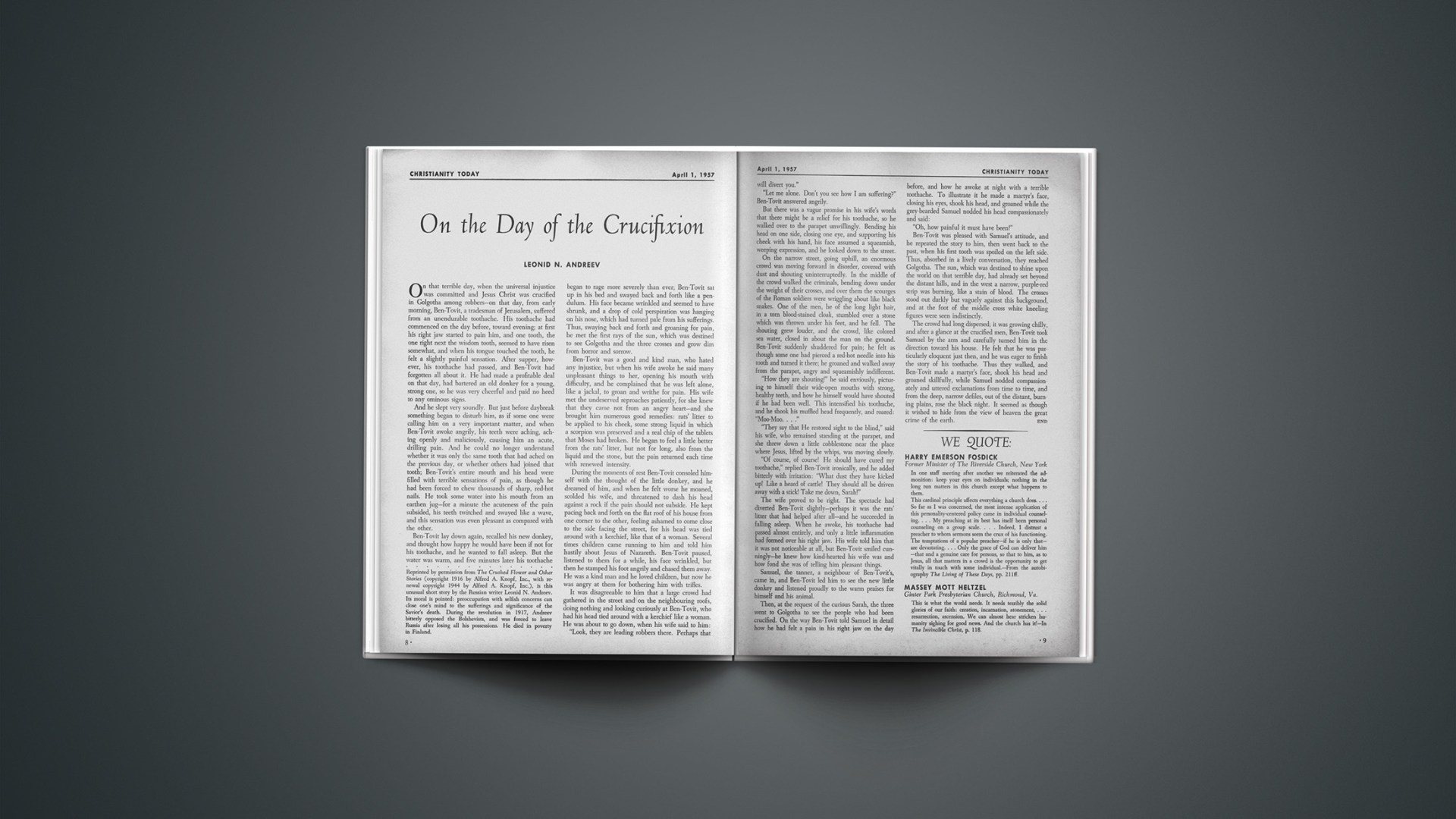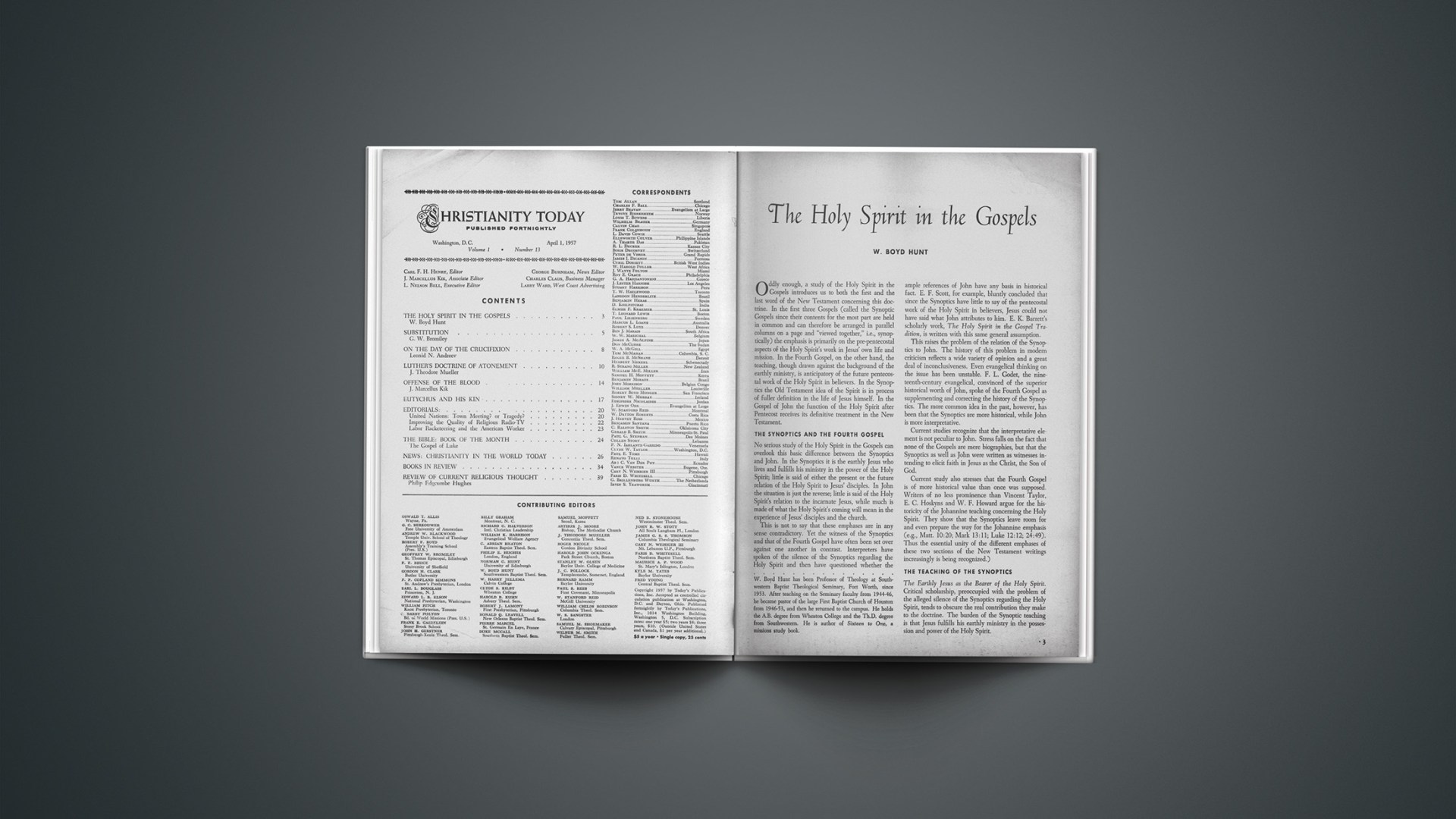The author of the Third Gospel was uniquely equipped to be the author of a book recording the history of the Great Physician in a reliable form. Although he was, according to his own declaration in Luke 1:1–4, no eyewitness of the gospel history, he had excellent opportunities to acquire all the authoritative information necessary for his two books, the Gospel of Luke and The Acts of the Apostles.
Authorship
The earliest Christian traditions unanimously declare that the author of Luke and Acts is “the beloved physician” of whom mention is made by the apostle Paul in Colossians 4:14, Philemon 24 and 2 Timothy 4:11. From these statements it is clear that Luke was with him while he was in captivity in Rome. This fits in excellently with the data of Acts. For according to Acts 16:10–17, 20:5–21:17 and 27:1–28:16 the author of Acts, after having accompanied Paul on several of his missionary journeys, stayed with him when he was taken to Rome as prisoner of the Roman Emperor.
According to Acts 1:1 the author of Acts is indeed also the author of the Gospel, for both are dedicated to a certain Theophilus and “the former treatise” to which he refers is manifestly the Third Gospel. The vocabulary, style and language of the Greek originals of Luke and Acts also conclusively prove that the tradition is correct in ascribing both books to the same author.
Knowing now that Luke was “the beloved physician” who accompanied Paul on long journeys (from Troas to Philippi, Acts, 16:10–17, about five years later from Philippi via Troas and Milete to Jerusalem, Acts 20:5–21:17, and finally from Caesaria to Rome, Acts 27:1–28:16) and who apparently stayed with him several years in Rome, we realize what excellent opportunities he had to obtain firsthand knowledge regarding the Gospel history.
Search For True Facts
Turning to the first four verses of the Third Gospel, we discover that Luke was well aware of his unique opportunity of discovering the true facts regarding Jesus Christ. And at the same time his statement in these first four verses, written in beautiful classic Greek, reveals the fact that Luke was deeply conscious of the tremendous responsibilities which rested upon him of being the author of such an important book.
He lived in times when to follow Jesus Christ was a matter of life and death. It thus was of the utmost importance that there should be absolute certainty regarding the facts on which his faith and that of his fellow-Christians were based. A man with his scientific outlook on life—one who witnessed so much of the “life and death” struggle between the early Christian Church and her Jewish and heathen opponents—he realized that only when the Christian faith is based on absolutely reliable facts will it be able to win its way in the world. He accordingly wrote to Theophilus, who was probably a well-educated and important person, that after he had from all available evidence “traced the course of all things accurately from the first,” he had decided to write a well-ordered account so that his reader “might know the certainty concerning the things wherein thou wast instructed” (1:3–4).
During the past more than one hundred years, Luke’s statement in 1:1 that many had already written accounts of the Gospel history by the time he decided to write his more comprehensive and well-ordered narrative was mostly not taken seriously enough. The idea reigned that while the Apostles lived, the spoken word was regarded as practically the only source for knowledge regarding the Gospel history. The truth of Luke’s statement has, however, recently been accentuated by the discovery of the Dead Sea Rolls. These ancient writings have proved beyond doubt that among religious Jewish circles of about the time of the beginning of our Christian era it was customary to have, apart from oral traditions, extensive written reports of what religious leaders said, did and experienced.
In this as well as in many other respects, modern investigations have revealed the remarkable historical trustworthiness of the writings of Luke. In fact there is, apart from other Bible authors, no other historian of antiquity who has been proved to be so remarkably reliable as the Greek physician, Luke, the author of our Third Gospel and Acts.
It is, indeed, the unique characteristic of our Christian faith that it is based not on speculations of theories but on definite historical facts. For spiritually we cannot live on uncertainties or half-truths. All other faiths and philosophic systems are the result of human speculations, and are only a manifestation of the vain struggle of those who try to find along their own roads the way to spiritual rest. In the Gospel of Luke, however, we have the historical account of how the living God in his redeeming grace through Jesus Christ entered into the life of mankind, seeking to save those that are lost.
A close study of the contents of the Third Gospel emphasizes the fact that Luke indeed had access to a very wide range of reliable written as well as oral sources of information. He definitely made extensive use of the Gospel of Mark which he knew to be a trustworthy account. He knew Mark personally (cf. Col. 4:10 and 14, and Philemon 24), and they most naturally would have discussed matters regarding the Gospel history.
Paul himself also would have had a very wide and accurate knowledge of the main facts regarding him in whose service he sacrificed everything—even his own life. Through his intimate contact with Paul, Luke would thus have learned much regarding the Gospel history. At Jerusalem, Caesarea and elsewhere Luke, with his enquiring type of nature and Hellenistic training and culture, most certainly would have made the best use of the unique opportunities to gather as much information as possible also from the original Apostles and other eyewitnesses of the life, death and triumph of him whom he had learned to adore and serve as the Savior of the world.
Comprehensive History
The result of all of this is that by the time Luke wrote the Gospel, he completely mastered his material. We note this in the fact that his Gospel gives the most extensive and comprehensive account of the history of Jesus—starting from the announcement of the birth of His forerunner (John the Baptist) and running right through to the resurrection and ascension. And in Acts, the sequel to his first “treatise,” he gives supplementary details regarding the forty days between the resurrection and ascension of Jesus and then relates the history of how the glorified, triumphant Savior through the Holy Spirit built his Church and used the Apostles and especially Paul to proclaim the glad tidings throughout so great a part of the Roman Empire.
Luke realized that there existed, especially among educated people of the time, an urgent desire for firmly established truth in the field of religion. The different philosophic schools of thought were contradicting each other, rested on mere speculative grounds and left unsatisfied the deepest spiritual needs of people. At the same time the popular pagan religions, with their gross immorality and superstitions, filled the serious minded and educated people with repugnance. Religious men like Luke and Theophilus thus yearned for reliable knowledge regarding things eternal and spiritual. So, Luke addresses himself to the many seekers after firmly established truth; and for all of us he has written his beautiful Gospel in such a way that we are also able “to know the glad tidings with full certainty.”
Aim Of Author
Although Luke had access to the best firsthand sources of information he did not write an ordinary detailed biography of our Lord. He had a definite purpose in mind and made use only of the information which served his purpose. This aim was to proclaim as clearly and as forcibly as possible (in the limited space available in a parchment roll) Jesus Christ as the all-sufficient and almighty Savior of the world. From the very start the light is focused on him. The history of John the Baptist and all other characters that appear in the Gospel narrative is related only because it points to the glorious fact that Jesus Christ is indeed the Son of God who came to the world to save those who are lost.
Luke wrote his Gospel not merely to relate a beautiful story or to satisfy curiosity. His Gospel is a mighty and unequivocal proclamation of the glad tidings that God has indeed fulfilled his promises and has sent his only begotten Son to live, work, die and triumph as the divine Savior. As in no other Gospel we see how Jesus progressively revealed himself as Son of God and almighty Savior of all who take refuge to him. We see him exercising divine authority over nature, over the world of invisible spirits, over the human body and over the spirit of man. We see him even calling the dead back to life and using divine prerogative to forgive sins. We hear God the Father affirming that he is indeed his beloved Son who must be obeyed. And thus right through the Gospel we see Christ living and acting as the One who is indeed human and who entered into the deepest suffering on our behalf, but who is at the same time truly the Son of God and who is thus able to save not only Jews, but also Samaritans, pagans, publicans, sinners and outcasts as well as respectable people, the poor as well as the rich and women as well as men. Luke clearly shows that the redeeming work of Christ is of universal, all-embracing significance. Even the murderer on the cross was given the assurance of eternal salvation when he turned with repentance and faith to the dying Savior.
When this fact is clearly grasped—that Luke wrote his Gospel primarily to proclaim Christ as the one who entered human history to save them that are lost—it becomes apparent why Luke on the one hand left out many details which we would have liked him to mention and why on the other hand he has so much material not found in the other three Gospels. This truth also banishes the idea spread by so many negative critics that the Gospels contradict each other. Far from really contradicting each other, an unprejudiced study of Luke compared with the other Gospels reveals that each Gospel writer deliberately chose to relate certain details and to leave out others because they never intended to write ordinary biographies. On the contrary each, from a certain angle, proclaims the glad tidings of God’s salvation in and through his Son. Accordingly the four Gospels supplement each other and in a manifestly divine manner give, when taken together, a perfect and well-balanced picture of Jesus as our all-sufficient Lord and Savior.
Partial Bibliography
The following are some of the more important commentaries on the Gospel of Luke: J. M. Creed, The Gospel According to St. Luke (Macmillan, 1942); B. S. Eaton, The Gospel According to St. Luke (T. & T. Clark, Edinburgh, 1926); A. J. Grieve, St. Luke in Peake’s Commentary (revised ed., Nelson, 1936); F. Godet, Commentary on the Gospel of Luke (T. & T. Clark, 1879); Jamieson, Fausset and Brown, St. Luke in Critical and Explanatory Commentary on the Bible (Eerdmans, 1935); W. Manson, The Gospel of Luke (in The Moffatt New Testament Commentary, 1930); A. Plummer, Gospel According to St. Luke (5th ed., I.C.C., T. & T. Clark, 1922). J. NORVAL GELDENHUYS
(For a detailed discussion of points raised in the above, and for bibliographical details regarding an intensive study of the Third Gospel, readers are referred to: Commentary to the Gospel of Luke by J. Norval Geldenhuys, 3rd edition, 1956, Wm. B. Eerdmans, Grand Rapids and Marshall, Morgan and Scott, Ltd., London. F. F. Bruce writes of this commentary, “I have much pleasure in commending this work to Bible students who appreciate a commentary which calls for time and thought, and not least to those who, like the author himself, are actively engaged in the ministry of the Word.”












